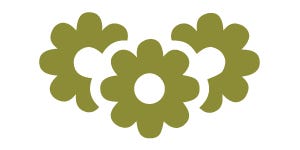How To Plant a Butterfly Garden

By David Salman, Founder and Chief Horticulturalist for High Country Gardens
A butterfly garden can be a wonderful part of your landscape, and will make a meaningful difference by creating habitat for butterflies in all of their life stages. Anyone who loves growing plants and flowers can grow a butterfly garden. A garden that's good for butterflies is also good for other pollinators, such as bees and hummingbirds, who often share the same nectar plants and utilize the same habitat.
The Four Basic Elements of a Butterfly Garden

Flowers and food: Plant a mix of flowers that bloom from the start of spring through fall. Make sure to include food plants for caterpillars, such as Milkweed for monarch butterfly larvae.

Shelter: Leave some bare patches of ground or small brush piles (in unused corners of the yard). Leave herbaceous plants, such as grasses, standing over the winter to protect overwintering eggs and caterpillar pupae waiting to emerge.

Water: A mud puddle is ideal for butterflies, providing them with a source of water and salt/minerals. You can create one using a bird bath or submerged pie plate, and add sand, gravel and water.

A Safe, Pesticide-Free Environment: Don't use chemical insecticides (especially systemic ones). Use caution when applying organic pesticides and use herbicides only for a weed emergency.
Tips for Attracting Butterflies to Your Yard
To attract and feed adult butterflies, our 'Butterfly Paradise' Pre-Planned Cottage Garden and our Pollinator Paradise Pre-Planned Garden provide many months of nectar-rich flowers for a wide range of butterflies. The pre-planned gardens arrive with our premium plants, care instructions and garden maps, to make planting a butterfly garden simple.
A Little Butterfly Biology
Butterflies and moths have three stages in their life cycles before becoming the flying adult insects we recognize.
- The mother butterfly lays eggs on preferred food plants.
- The eggs hatch into caterpillars who feed on their food plants. These caterpillars grow to their full size before going dormant as a chrysalis (butterfly) or a cocoons (moth) in preparation for adulthood.
- Then caterpillars go through metamorphosis and emerge as flying adults. Adults mate, lay eggs, feed and die, leaving behind the next generation.

Plant Both Caterpillar and Butterfly Food
Often the flowering plants that feed the adult moths and butterflies are different from the plants that feed caterpillars. For a butterfly garden, the gardener must plant both.
Most flowers that attract butterflies and moths will feed a wide range of species.
When it comes to feeding their caterpillars, butterflies and moths can either have a need for very specific food plants or have a taste for a wider range of plants. This depends on the species of each moth and butterfly as they will have different requirements.
Adult Butterflies
Flower shapes that attract butterflies:
- flat topped, such as Achillea
- flower spikes with lots of tiny flowers, such as Liatris, Buddleia, and Agastache
- cone type, such as Echinacea
Caterpillars
Food plants for caterpillars vary, but widely fed-upon plants include:
- oak, willow, cherry, poplar, birch, apple, and alder trees
- dandelions
- clover
- dill
Monarch Butterflies & Caterpillars
For widespread migrating species of butterflies, like the regal Monarch:
- various species of milkweed (Asclepias) provides both larval food and nectar for adults.
Shop Butterfly Favorite Plants
Creating A Safe, Pesticide-Free Environment
It is important to not spray indiscriminately in your yard and kill caterpillars. Even organic formulations like BT (Bacillus thuringiensis) that you would spray to kill corn earworms (moth caterpillars), are broad spectrum and will kill all moth and butterfly caterpillars.
It's also essential NOT to use systemic chemical insecticides (absorbed through leaf tissue and distributed through all parts of the plants including flowers). Many of these formulations are Neonicotinoids. Systemically treated plants have toxic flowers which will poison the adult butterflies and moths!
And if you have tomatoes, you'll have "horn worms", the caterpillar of hawk moths. These are the hovering hummingbird-like moths that pollinate flowers at dusk like Evening Primrose (Oenothera) and Hummingbird Mint (Agastache). So plant an extra tomato plant or two and pick off the horn worms, don't spray, leaving some to mature into adults.
Listen to an interview with David Salman on Utah Public Radio to Learn More About Butterfly Gardening
The Xerces Society
The Xerces Society is a nonprofit organization that protects wildlife through the conservation of invertebrates (insects) and their habitat. For over forty years, the Society has been at the forefront of invertebrate protection worldwide, harnessing the knowledge of scientists and the enthusiasm of citizens to implement conservation programs.
The society has just published an excellent new book:
"Attracting Native Pollinators: Protecting North America’s Bees and Butterflies" which is available on their website: http://www.xerces.org.
It will give you a lot more specific information on what to plant regionally to support native butterfly populations in your garden and landscape.
© All articles are copyrighted by High Country Gardens. Republishing an entire High Country Gardens blog post or article is prohibited without permission. Please feel free to share a short excerpt with a link back to the article on social media websites, such as Facebook and Pinterest.

